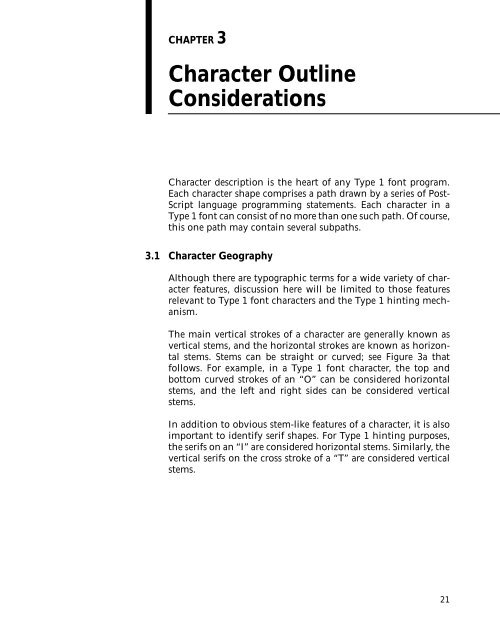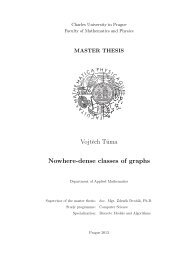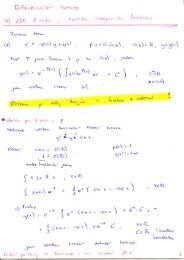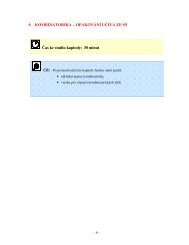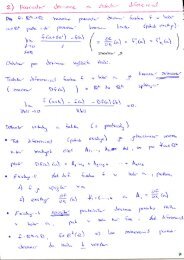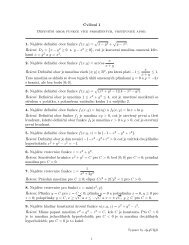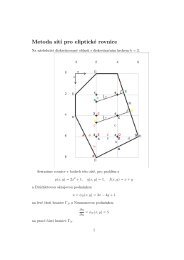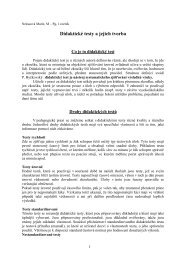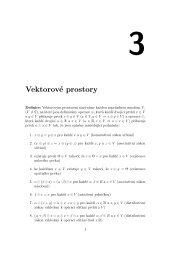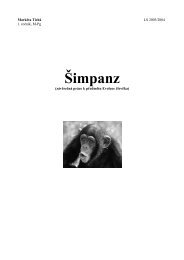The Adobe Type 1 Font Format book (PDF: 445 KB) - Adobe Partners
The Adobe Type 1 Font Format book (PDF: 445 KB) - Adobe Partners
The Adobe Type 1 Font Format book (PDF: 445 KB) - Adobe Partners
You also want an ePaper? Increase the reach of your titles
YUMPU automatically turns print PDFs into web optimized ePapers that Google loves.
CHAPTER 3<br />
Character Outline<br />
Considerations<br />
Character description is the heart of any <strong>Type</strong> 1 font program.<br />
Each character shape comprises a path drawn by a series of Post-<br />
Script language programming statements. Each character in a<br />
<strong>Type</strong> 1 font can consist of no more than one such path. Of course,<br />
this one path may contain several subpaths.<br />
3.1 Character Geography<br />
Although there are typographic terms for a wide variety of character<br />
features, discussion here will be limited to those features<br />
relevant to <strong>Type</strong> 1 font characters and the <strong>Type</strong> 1 hinting mechanism.<br />
<strong>The</strong> main vertical strokes of a character are generally known as<br />
vertical stems, and the horizontal strokes are known as horizontal<br />
stems. Stems can be straight or curved; see Figure 3a that<br />
follows. For example, in a <strong>Type</strong> 1 font character, the top and<br />
bottom curved strokes of an “O” can be considered horizontal<br />
stems, and the left and right sides can be considered vertical<br />
stems.<br />
In addition to obvious stem-like features of a character, it is also<br />
important to identify serif shapes. For <strong>Type</strong> 1 hinting purposes,<br />
the serifs on an “I” are considered horizontal stems. Similarly, the<br />
vertical serifs on the cross stroke of a “T” are considered vertical<br />
stems.<br />
21


